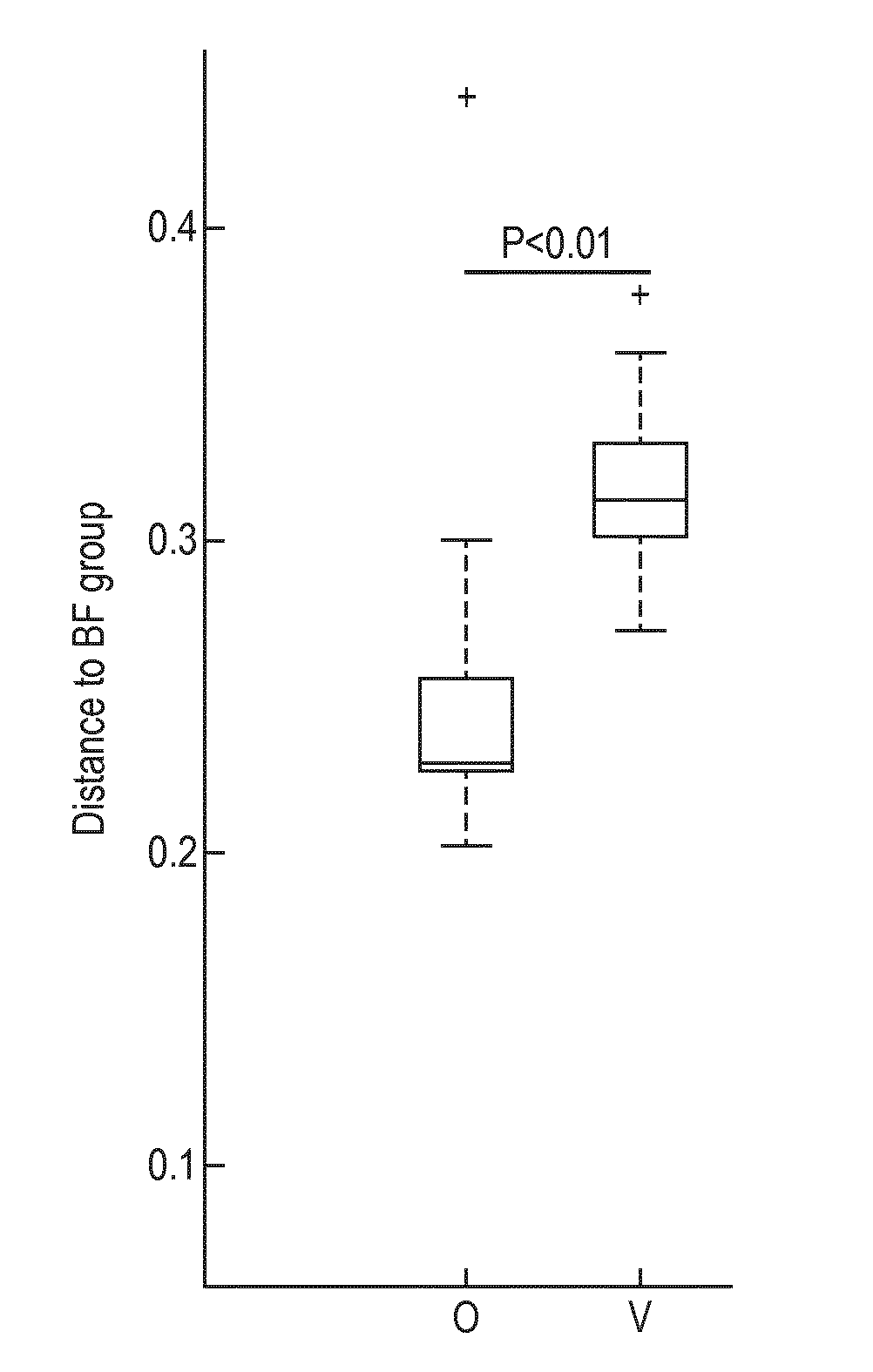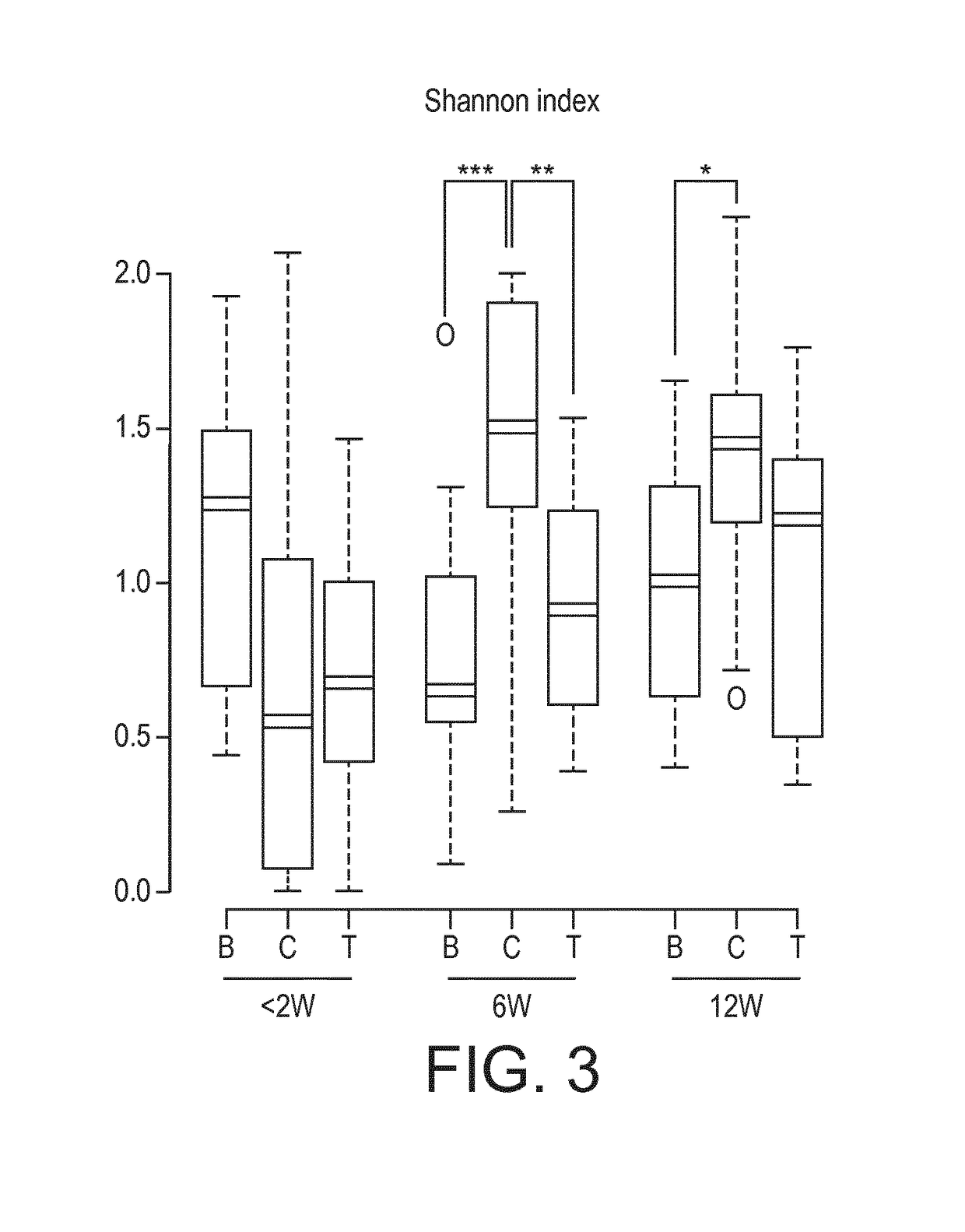Nutritional compositions and infant formulas comprising bifidobacterium animalis ssp. lactis and optionally a mix of oligosaccharides for inducing a gut microbiota close to the one of breast fed infants
a technology of infant formula and bifidobacterium animalis, which is applied in the field of nutritional compositions for infants and young children and their health effects in infants, can solve the problems of inability to induce the identical effects, infant fed infant formula may not benefit from the natural, well balanced intestinal gut microbiota of infants fed exclusively or predominantly human breast milk, etc., to achieve elimination or decrease the number of pathogenic populations, avoid the imbalance of the gut microbiota, and restore the gut microbio
- Summary
- Abstract
- Description
- Claims
- Application Information
AI Technical Summary
Benefits of technology
Problems solved by technology
Method used
Image
Examples
example 1
[0195]Table 1 provide examples of the composition of the invention.
TABLE 1sn2 +sn2 +3 g / L5 g / LControl“sn2”OFOFPer LiterUnitsformulaformulaformulaformulaEnergyKcal670670670670Proteing13.413.413.413.4Fatg36363636% C16 at sn-2% total fat2.69.69.69.6Carbohydrateg73737373Oligofructoseg0035Vitamin A (RE)mcg660660660660Vitamin Dmcg10.610.610.610.6Vitamin E (TE)mg7.47.47.47.4Vitamin Kmcg67676767Vitamin B1mcg1000100010001000Vitamin B2mcg1100110011001100Vitamin B6mcg550550550550Vitamin B12mcg1.81.81.81.8Niacinmcg5000500050005000Folic Acidmcg107107107107Pantothenicmcg3500350035003500AcidBiotinmcg20202020Vitamin Cmg90909090Cholinemg100100100100Inositolmg45454545Taurinemg47474747Luteinmcg25252525Carotenesmcg210210210210Calciummg420420420420Phosphorousmg240240240240Magnesiummg45454545Ironmg8888Zincmg6666Manganesemcg50505050Coppermcg333333333333Iodinemcg100100100100Sodiummg160160160160Potassiummg650650650650Chloridemg433433433433Seleniummcg14141414Fluoridemcg25252525Nucleotidesmg26262626CMPmg13131...
example 2
[0198]Study Set-Up
[0199]A multi-center, prospective, randomized, controlled, double-blind clinical trial of two groups in parallel was carried out in India. A non-randomized exclusively breast-fed group was included as a reference. Main inclusion criteria for all infants consisted of being healthy, born at full term, less than 3 months of age at enrollment and requiring formula-feeding due to breast-feeding failure (randomized groups) or exclusively breast-fed (reference group). Randomized infants were assigned to one of 2 treatment groups:
[0200]1. Subjects receiving Starter Formula containing Bifidobacterium animalis spp. lactis NCC 2818 (=B. lactis CNCM I-3446) from between 14 days and 3 months to 6 months (Group O). The infant formula of Group O is a nutritional composition of the invention.
[0201]2. Subjects receiving Starter Formula with the same composition but without B. lactis from between 14 days and 3 months to 6 months (Group V) (not a composition of the inve...
example 3
[0211]Nutritional intervention trial. At a mean age of 5 days, 115 healthy full term infants were enrolled into a nutritional intervention trial. Infants from mothers who decided not to breastfeed were randomized to either a starter infant formula (control formula C, n=37, 1.8 g protein / 100 kcal; whey / casein ratio 70:30) or the same formula supplemented with a prebiotic (BMOS) at a total oligosaccharide concentration of 5.7±1.0 g / 100 g of powder formula (8 g / L in the reconstituted formula) and a probiotic (B. lactis strain CNCM-I-3446 with 1×107 cfu / g of powder formula; 1.4×107 cfu / L reconstituted formula) (test formula T, n=39) for a 12-week feeding period. Infants from mothers who decided to exclusively breastfeed were enrolled in the breastfed group (group B, n=39), which served as physiological reference group. The “BMOS” used in the trial is as defined in the present invention.
[0212]Stool characteristics. In the per protocol analysis, the number of stools decreas...
PUM
 Login to View More
Login to View More Abstract
Description
Claims
Application Information
 Login to View More
Login to View More - R&D
- Intellectual Property
- Life Sciences
- Materials
- Tech Scout
- Unparalleled Data Quality
- Higher Quality Content
- 60% Fewer Hallucinations
Browse by: Latest US Patents, China's latest patents, Technical Efficacy Thesaurus, Application Domain, Technology Topic, Popular Technical Reports.
© 2025 PatSnap. All rights reserved.Legal|Privacy policy|Modern Slavery Act Transparency Statement|Sitemap|About US| Contact US: help@patsnap.com



